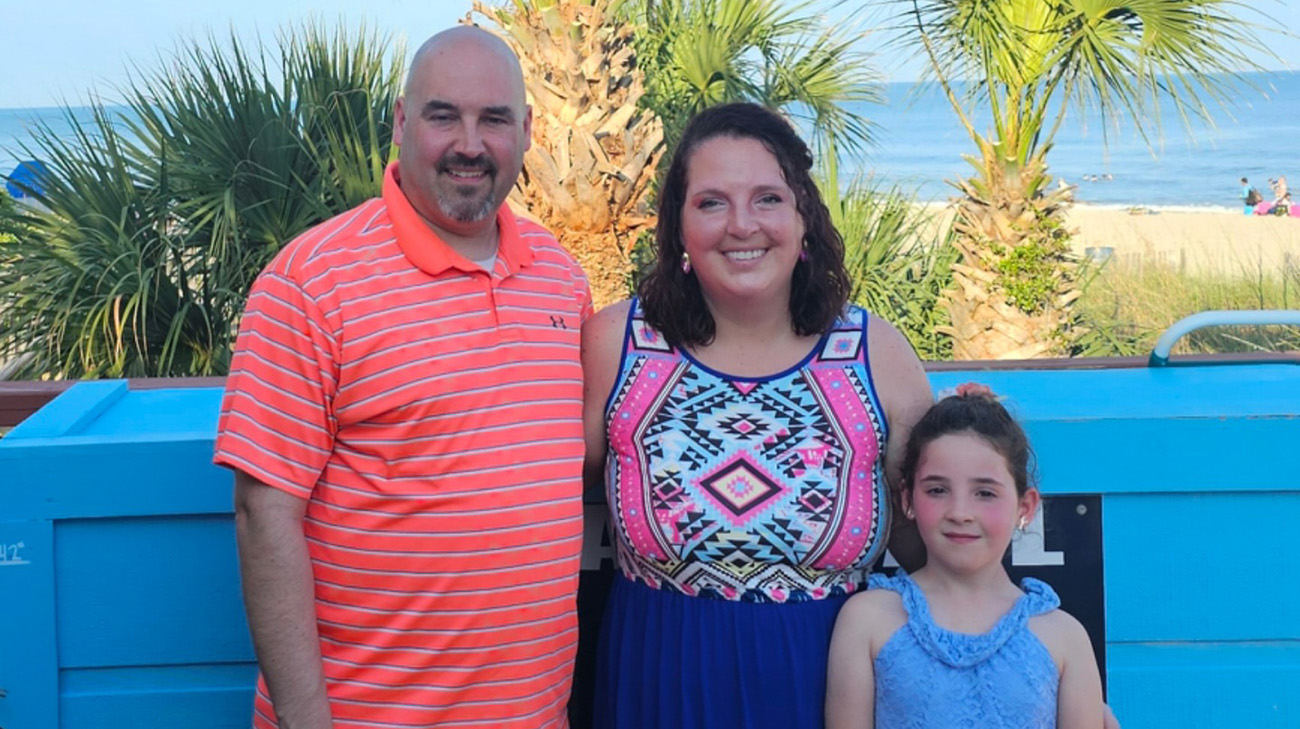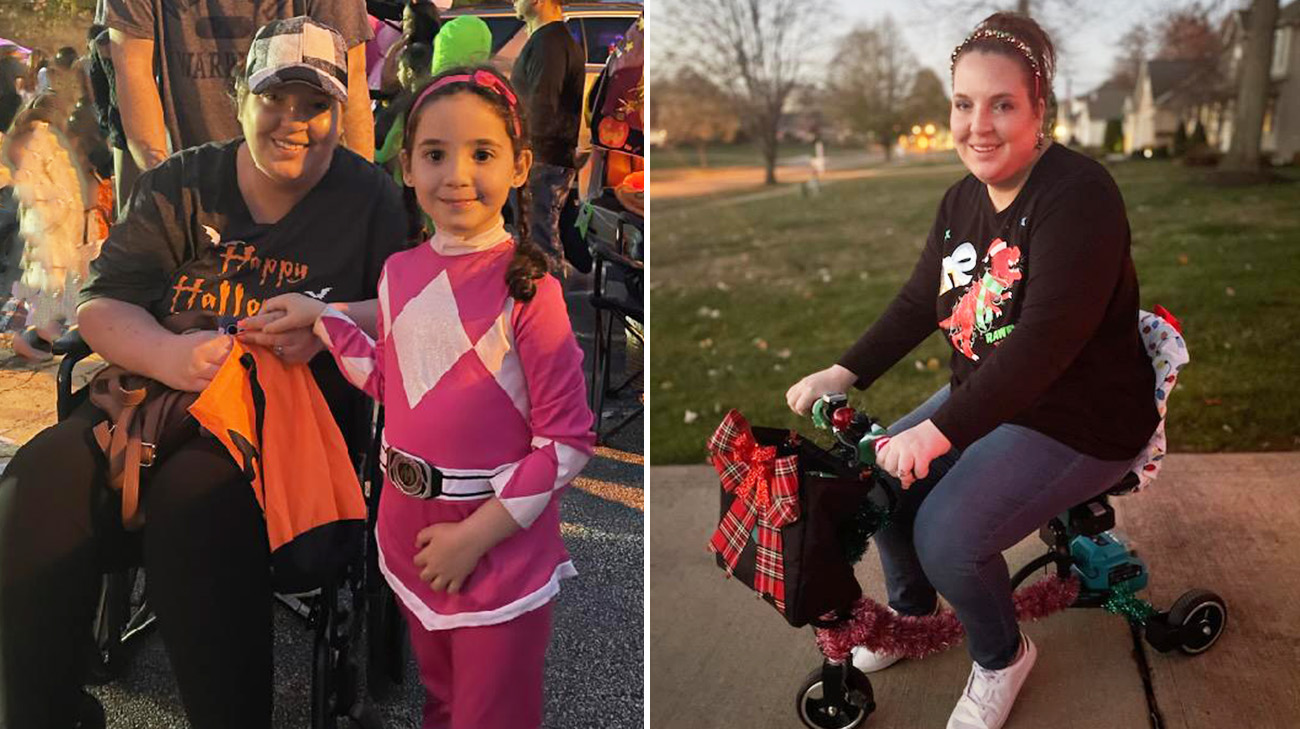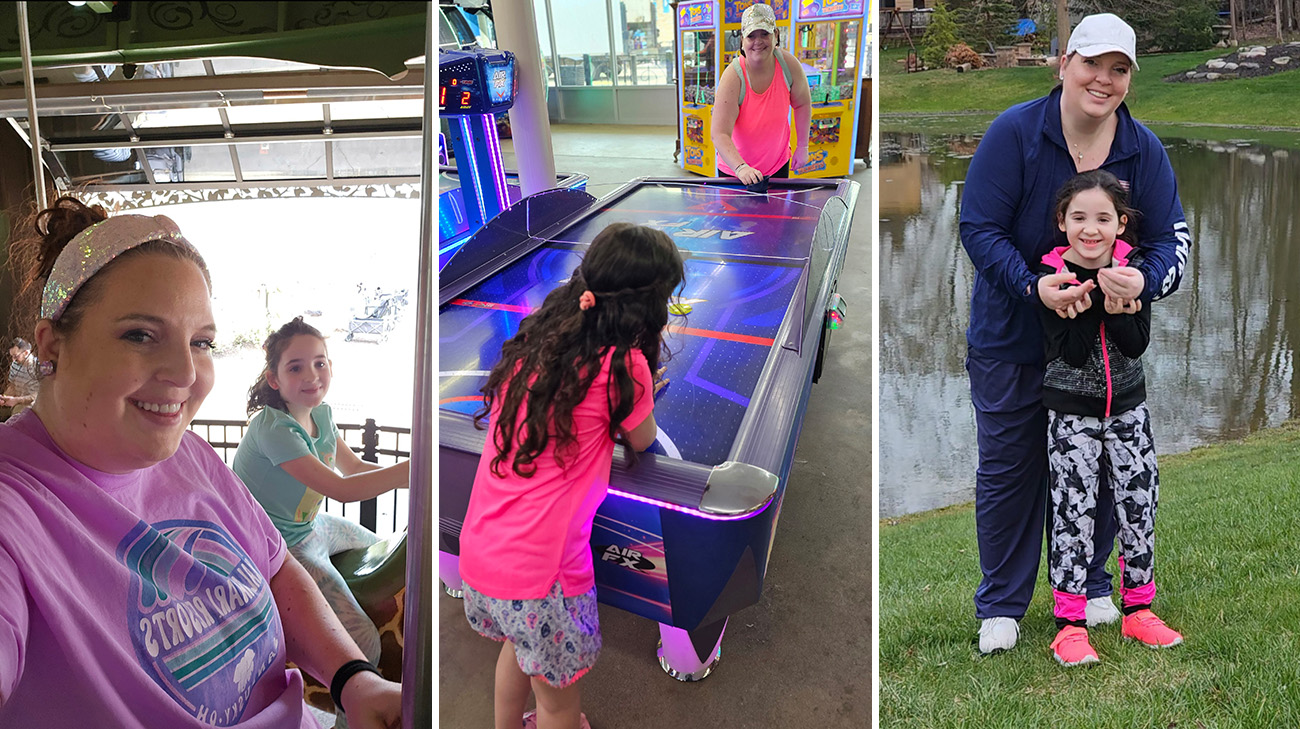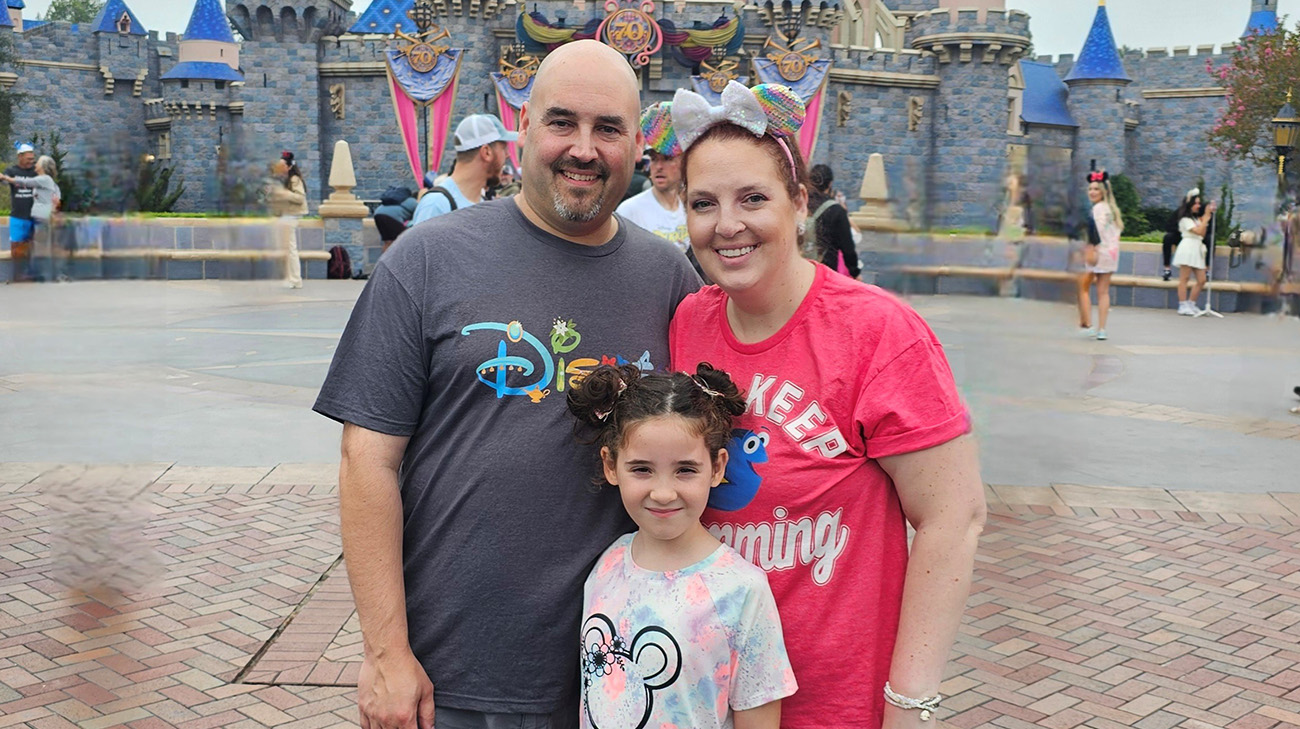
For several years, as she suffered from debilitating chronic pain, Melissa Platko felt like she was an observer, as life continued unfolding around her.
“It was hard even getting my daughter up for school or putting her to bed at night,” recalls Melissa, 35, of Mentor, Ohio, who required a cane or a wheelchair to function. “I felt like I was watching my husband be a single parent. That was the hardest part, as I couldn’t do much of anything.”
She reflected on those difficult days while enjoying the Southern California sunshine, surrounded by her 7-year-old daughter Savannah, husband Gary, her brother and sister-in-law and her parents during a long-awaited family vacation. For Melissa, that experience once seemed impossible—until she found relief through the Comprehensive Pain Recovery Program at Cleveland Clinic’s Neurological Institute.
After years of battling a host of medical conditions —including stiff person syndrome, ankylosing spondylitis, neuropathy and preeclampsia —and coping with the lingering effects of multiple surgeries that also weighed heavily on her mental health, Melissa is once again able to fully engage in life with her family.
When Pavan Tankha, DO, first met with Melissa and evaluated her worsening chronic pain –exacerbated significantly after pregnancy –he developed a comprehensive treatment plan. It included intensive physical therapy, mental health support, including several sessions with pain psychologist David Weaver, LISW-S, and a recommendation to begin low-dose ketamine infusions as part of her medicinal therapy.

Melissa needed a wheelchair and mobile support prior to receiving ketamine infusions for her chronic pain. (Courtesy: Melissa Platko)
As Dr. Tankha explains, ketamine –which has been used as an anesthetic medication for more than 50 years –has also shown to be effective to ease chronic pain in certain patients. Cleveland Clinic recently published the results of a large-scale clinical trial of ketamine for pain relief. It confirmed that between 20 and 46% of recipients achieve meaningful improvements in their daily functioning, sleep and pain management when ketamine is used as part of a comprehensive pain management program.
“These are patients where nothing else has worked. In the absence of other good and meaningful biomedical treatments for chronic pain, ketamine is worth exploring further,” states Dr. Tankha, who has been treating Melissa in his role as medical director of the Comprehensive Pain Recovery program.
For Melissa, ketamine has replaced several pain medications that offered only limited or short-term relief, including certain opioids that often came with harsh side effects. She now receives 40-minute ketamine infusions five days in a row, timing her most recent treatment just before her family trip to ensure she could make the most of the experience.
“I’m so grateful for the ketamine,” Melissa states. “The pain doesn’t go away completely, but I’m able to tolerate it much more.” That improvement has made a meaningful difference in her mobility. She now only occasionally relies on her cane or wheelchair, rather than needing them constantly.

Melissa can now focus on enjoying more time with her daughter. (Courtesy: Melissa Platko)
Dr. Tankha notes the physical, psychological and social barriers Melissa has fought to overcome are all too common for the millions of people who endure chronic pain.
“Chronic pain can have devastating effects and be very isolating,” says Dr. Tankha, who describes it as pain that lingers for more than three months, often continuing after an initial injury or illness has healed. “It differs from acute pain, because it often takes on psychological and social suffering, too. It can be quite traumatic for the patient.”
The multifaceted impacts of chronic pain are why the Comprehensive Pain Recovery Program focuses on treating its patients holistically. “It’s what makes our program unique,” continues Dr. Tankha, “instead of trying to treat a symptom, we treat the whole patient. Like Melissa, they just want their quality of life back.”
Beyond allowing her to do “all the important little things in life,” like showering or shopping with minimal pain, the success of Melissa’s ketamine treatment even empowered her to organize and run a garage sale at her home, something she had dreamed of doing for years. “That meant a lot to me,” she notes. “I would have never been able to do that two years ago.”
Seeing how ketamine, as part of a comprehensive pain management treatment protocol, is transforming the lives of many patients, Dr. Tankha is hopeful continued research will lead to even more effective outcomes.

Melissa with her husband, Gary, and daughter, Savanahh, during a long-awaited family vacation. (Courtesy: Melissa Platko)
“The progress of medicine can feel slow and incremental at times, but it is undeniably forward-moving,” Dr. Tankha affirms. “While ketamine is currently considered a last-resort option, it’s helping some patients achieve a significantly better quality of life, and that’s a meaningful win for us. Through this study, we’re encouraging other physicians and hospitals to recognize there is a safe and effective option available for patients suffering from chronic pain.”
“I feel like a completely different person. I’m more connected to the world around me,” exudes Melissa, who hopes to one day resume her career as an artist and photographer. “Even something as small as being able to drive my child home puts a smile on my face. I’m excited to see what the future holds.”
Related Institutes: Neurological Institute

